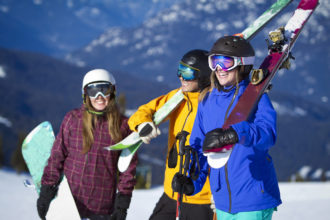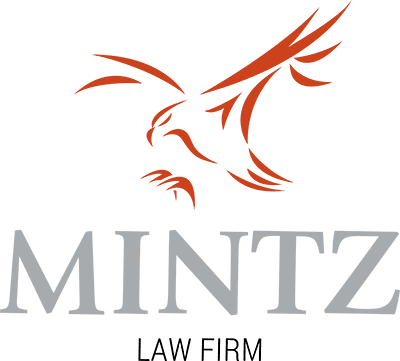Best Practices for Skiers and Riders to Stay Safe
 The thrill of carving down a snow-covered slope is an experience like no other, blending exhilaration with the peaceful beauty of winter. But as much as skiing and snowboarding offer adventure and fun, they also come with risks that can quickly turn a dream day into a nightmare. Every skier and rider, from seasoned pros to first-timers, has the power to reduce these risks and prioritize safety. By adopting smart practices, you can fully enjoy the slopes while protecting yourself and others.
The thrill of carving down a snow-covered slope is an experience like no other, blending exhilaration with the peaceful beauty of winter. But as much as skiing and snowboarding offer adventure and fun, they also come with risks that can quickly turn a dream day into a nightmare. Every skier and rider, from seasoned pros to first-timers, has the power to reduce these risks and prioritize safety. By adopting smart practices, you can fully enjoy the slopes while protecting yourself and others.
At Mintz Law Firm, we’ve seen how injuries on the slopes can disrupt lives and lead to complex legal challenges. With over 35 years of experience, we’re committed to promoting safety and providing guidance to those injured in skiing or snowboarding accidents.
Best Practices for Skiers and Riders to Stay Safe with Ski Safety
Skiing and snowboarding are some of the most popular activities you’ll find in this great state of ours. Once the weather turns cold and snow begins to cap the mountains, avid skiers or riders and those just starting out begin chomping at the bit to hit the slopes. And why not? They are not only fun activities that you can share with your friends and family, it’s also great exercise.
Unfortunately, skiing and snowboarding also come with a certain level of danger that can lead to anything from bruises and scrapes to broken limbs and fatalities. You can cut down your chances of being hurt while on the slopes by following these simple tips:
Take Lessons
The first thing you should do if you’ve never skied or snowboarded before or if it’s been a while is to sign up for a brief lesson. This will educate you or refresh your memory as to how you can stay safe throughout the day. Many people who have skied or ridden in the past avoid this because they’re too embarrassed or arrogant, which can lead to accidents and injuries. A brief lesson can be indispensable to staying safe on the slopes.
Wear a Helmet
This might seem like a no-brainer (no pun intended) to anyone who’s fallen down on the slopes, but every year, many people experience concussions and much worse due to the simple fact that they decided not to don head protection. Skiing and snowboarding can be a high-speed activities, and losing control could have disastrous consequences if you don’t wear a helmet. Perhaps you don’t think helmets are cool, but you know what’s less cool? A serious head injury that could’ve been easily avoided.
Learn How to Stop
The simplest lesson you can learn that will help avoid accidents is how to stop. This will prevent you from losing control when things get a little hairy or when you get nervous, especially when there’s a crowd of others around you. It’s a good idea to practice stopping at regular intervals so that it becomes a part of your body’s muscle memory. That way, stopping becomes second nature – you’ll cut down your reaction time, avoid objects, and help prevent accidents.
Avoid Areas Above Your Skill Level
When engaging in any activity, many of us can’t wait to get to the higher levels of experience so that we can get even more enjoyment out of it. To that end, you’ll be given the opportunity while skiing or riding to choose from different paths to take with differing levels of difficulty. If you skip ahead, you may find yourself dealing with dangerous speeds and shifts in terrain that you’re not prepared to safely navigate. Additionally, be cautious of letting friends talk you into taking on challenges that exceed your skill level, as this can lead to unsafe situations.
Don’t Drink Alcohol
There’s absolutely nothing wrong with relaxing after a hard day on the slopes by having a drink or two with friends or family. The operative word in that sentence, of course, is after. Skiers or riders who decide to crack open a beer – or something stronger – and then head out to the slopes are often the ones who end up endangering themselves or others.
Leave the Horseplay on the Playground
Most of us hit the slopes for one simple reason – fun! But, despite the level of enjoyment, skiing and snowboarding are activities that must be respected and taken seriously at all times. This is not the time for children or adults to mess around by knocking each other over or throwing snowballs when on a downward slope. Doing so can quickly turn into a dangerous situation.
Staying safe while on the slopes isn’t difficult if you follow the tips listed above. Every year, however, Mintz Law Firm handles injury cases related to skiing and snowboarding accidents. If you or a loved one experiences such an accident, be sure to reach out for a free case evaluation.
Preparing for a Safe Ski Trip
Before embarking on a ski trip, it’s essential to prepare yourself for a safe and enjoyable experience. Start by researching the ski resort you plan to visit. Familiarize yourself with the terrain, study the trail map, and understand the resort’s safety guidelines. This knowledge will help you navigate the slopes more confidently.
Next, keep an eye on the weather forecast and snow conditions. Knowing what to expect can help you pack appropriately and plan your skiing activities. Make sure to pack all the essential gear, including skis, boots, helmets, and warm clothing. Proper equipment is crucial for both performance and safety.
Planning your itinerary is also important. Create a schedule that balances skiing with rest and relaxation. Overexertion can lead to accidents, so make sure to include downtime in your plans. If you’re a beginner or looking to improve your skills, consider taking a lesson from a certified instructor. This can make a significant difference in your confidence and ability on the slopes.
Understanding Ski Resort Rules and Etiquette
Ski resorts have rules and etiquette designed to ensure a safe and enjoyable experience for everyone. One of the most important guidelines is the Responsibility Code. This set of rules includes essential practices like yielding to other skiers, staying in control, and respecting trail signs.
Respecting other skiers is paramount. Always be aware of your surroundings and yield to those who are downhill from you. This helps prevent collisions and ensures a smoother flow of traffic on the slopes. Following trail signs and closures is also crucial. These signs are there for your safety, guiding you away from potentially hazardous areas.
Ski patrol plays a vital role in maintaining safety on the slopes. They are there to assist in emergencies and enforce the resort’s rules. Always follow their instructions and respect their authority. Their presence is a key component in keeping the ski environment safe for everyone.
Skiing Safely on the Slopes
Skiing safely on the slopes requires a combination of common sense, awareness, and skill. First and foremost, always stay in control of your speed and direction. Being able to stop or avoid other skiers and objects is crucial in preventing accidents.
Awareness of your surroundings is equally important. Keep an eye out for other skiers, trees, rocks, and other obstacles. Adjust your speed and direction as needed to navigate safely. Using proper skiing technique, including turning and stopping, helps maintain control and reduces the risk of accidents.
Taking regular breaks is also essential. Skiing can be physically demanding, especially in challenging conditions. Resting allows you to recharge and stay alert, reducing the likelihood of fatigue-related accidents.
Specialized Skiing Situation
Certain skiing situations require extra caution and awareness. Backcountry skiing, for example, demands specialized knowledge and equipment. Always carry avalanche safety gear and consider skiing with a guide or partner who is experienced in backcountry conditions.
When skiing in crowded areas, be extra cautious. High traffic can increase the risk of collisions, so adjust your speed and direction accordingly. Stay vigilant and give other skiers plenty of space.
Skiing at night presents its own set of challenges. Ensure you have proper lighting and stick to designated trails. Visibility is reduced, so it’s important to be even more aware of your surroundings and ski within your limits.
Emergency Preparedness
In the event of an emergency, being prepared can make all the difference. Familiarize yourself with the ski resort’s emergency procedures. Knowing what to do in case of an accident or injury can help you respond quickly and effectively.
Carrying a basic first aid kit is a good idea. Include supplies such as bandages, antiseptic wipes, and pain relievers. These can be invaluable in treating minor injuries on the spot.
It’s also important to know how to call for help. Whether using a cell phone or a two-way radio, make sure you know the emergency contact numbers and procedures for the resort. Quick communication can be crucial in getting timely assistance.
Additional Safety Considerations
There are several additional safety considerations to keep in mind when skiing. Head injuries are a common risk, so always wear a helmet and take steps to prevent falls. Properly adjusted equipment can also help reduce the risk of injury.
Snow conditions can change rapidly, affecting the safety of the slopes. Stay informed about the latest weather forecasts and adjust your skiing plans accordingly. Be aware of other skiers and yield to those who are downhill from you. This helps maintain a safe flow of traffic and prevents collisions.
Traffic merges can be particularly tricky. When merging with other skiers, be cautious and adjust your speed and direction to avoid accidents. Using common sense and staying alert can go a long way in ensuring a safe and enjoyable skiing experience.
By following these tips and being aware of the potential risks and hazards, you can help ensure a safe and enjoyable skiing experience.
Why Choose Mintz Law Firm After a Skiing or Snowboarding Accident?
At Mintz Law Firm, we understand that skiing and snowboarding accidents can be life-altering, whether caused by hazardous conditions, equipment failure, or collisions. With over 35 years of experience serving Colorado, we’ve successfully helped clients navigate the complexities of personal injury claims stemming from slope-related incidents. Our firm is dedicated to providing personalized attention and unwavering support throughout your case.
Our commitment to client care sets us apart. We prioritize your well-being, guiding you through every step of the legal process to help you pursue the compensation you deserve. If you’ve been injured while skiing or snowboarding, reach out to us for a free case evaluation. Call us at (303) 462-2999 or visit our contact page.
